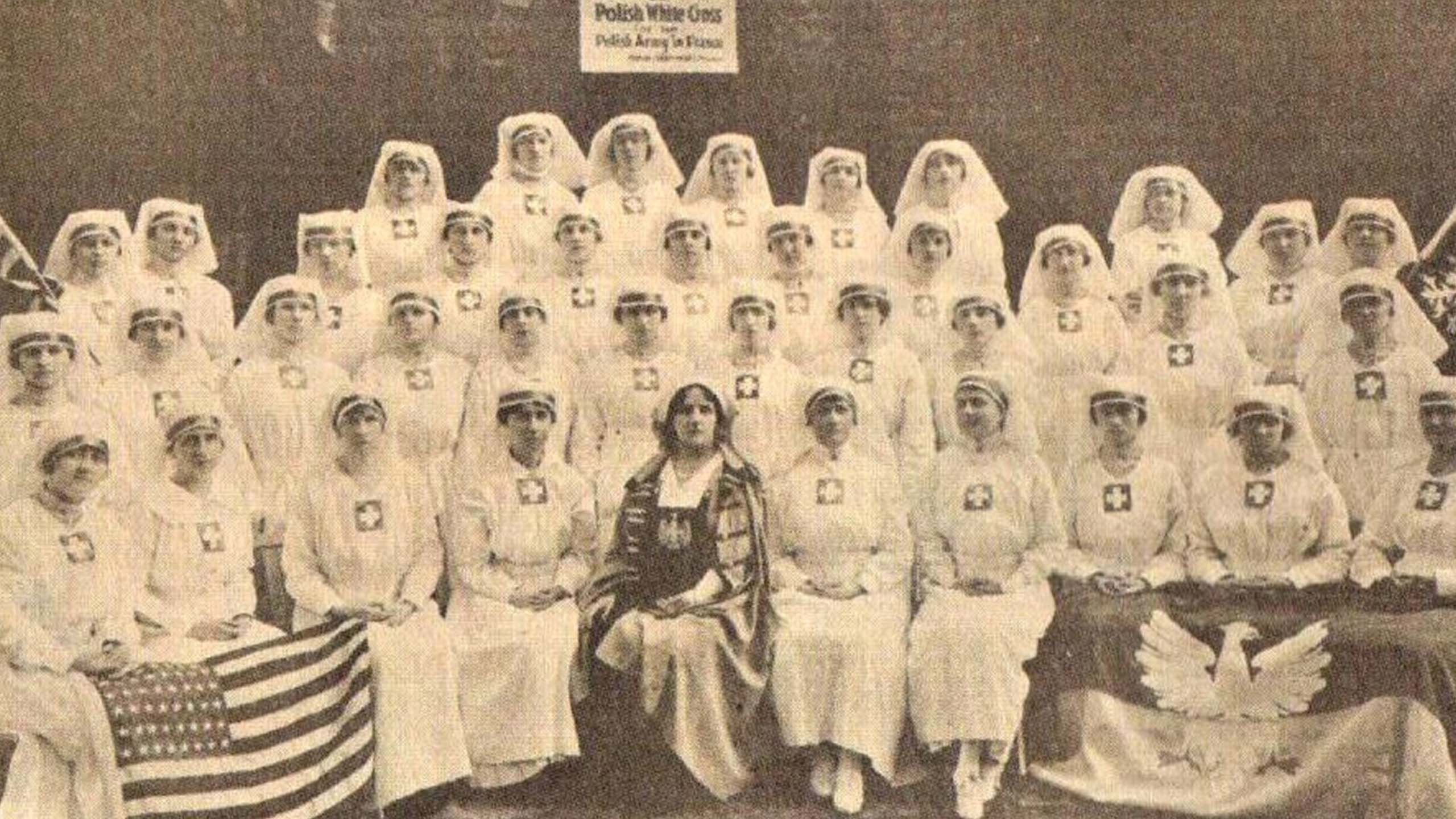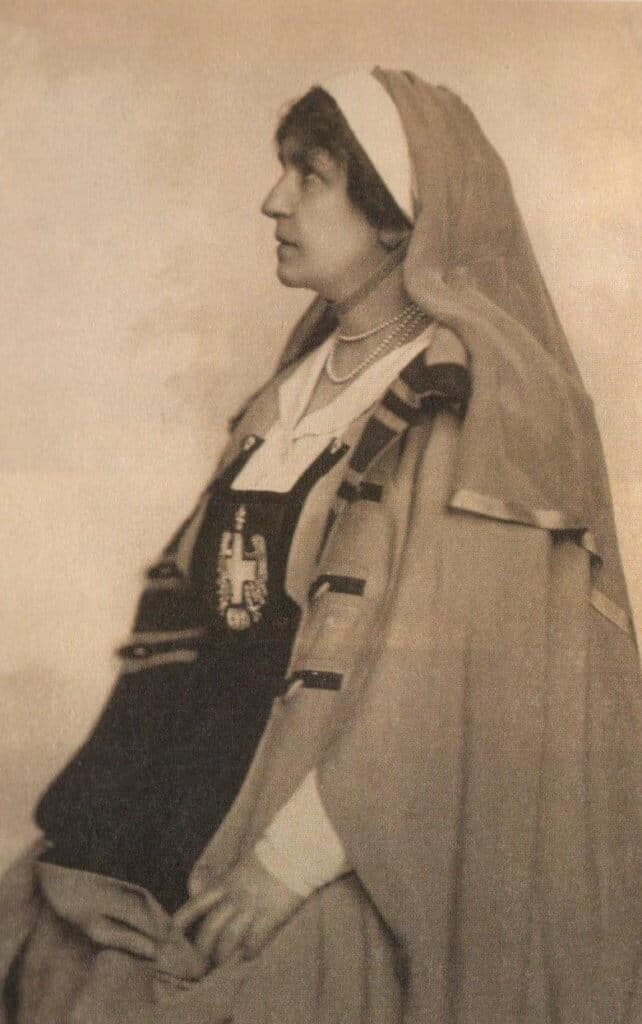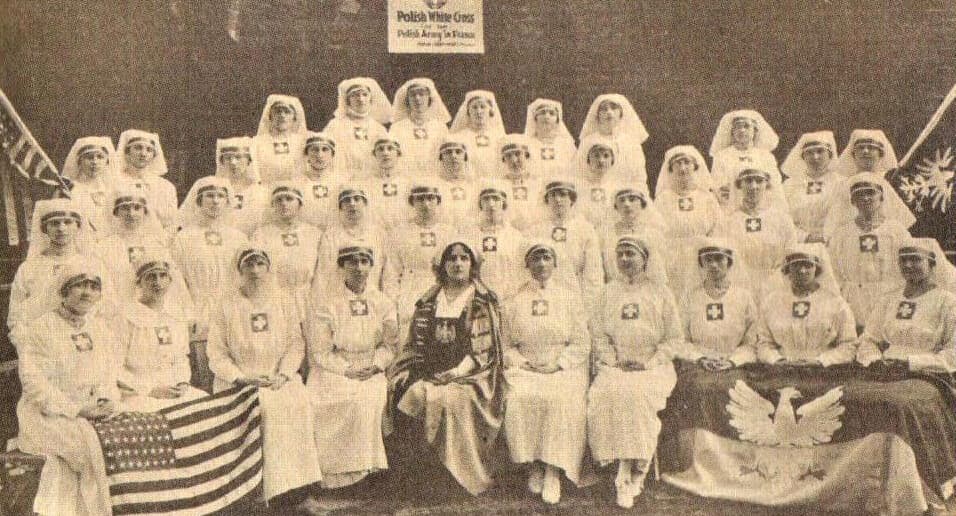03. The Polish Red Cross and the Polish White Cross existed simultaneously, the president of which was Helena Paderewska.

The organization of the Polish White Cross was established on February 2, 1918, in the United States during World War I. It was founded by Helena Paderewska, the wife of Ignacy Paderewski. Its main goal was to provide assistance to the victims of war.

Helena Paderewska in 1917 in the United States, sought to transform and recognize the organization she established and led in the United States, called the Committee for the Care of Polish Soldiers, into a national association of the Red Cross of Poland. Following the refusal of the International Committee of the Red Cross to create a Polish branch of this organization, H. Paderewska organized and financed the recruitment of female volunteers for nursing service, to send them to places where Poles conscripted into three armies – Russian, German, and Austrian – were fighting during World War I. She named the organization the Polish White Cross. In the beginning, the organization operated in the United States, where its numerous members gathered supplies, clothing for soldiers fighting in the country, as well as for volunteers of the army being formed in France (underwear, sweaters, medical supplies, socks, soap, tobacco). Polish parishes also joined the action. The White Cross provided particular care for the families of volunteers, especially in the event of the father's death or disability. The second statutory goal of the association, for which the White Cross became particularly known, was to promote culture and education, to awaken patriotic attitudes, and to raise national and civic awareness among Polish soldiers serving in the occupying armies, and after the end of World War I among the soldiers of the regular service of the Polish Army.
After arriving in France in 1918, H. Paderewska recruited volunteers to fight for Poland's freedom among war prisoners and wounded soldiers in hospitals. The activity of the Polish White Cross in France began on March 1, 1918, and lasted until June 1, 1919, i.e., until the final transport of the Polish Army to Poland. During this time, the Polish White Cross organized holiday aid for 27,000 soldiers, delivered underwear, books, cigarettes, medical supplies, and medicines to volunteers. It sent 12 ambulances and two cars for the army, and maintained 42 nurses working in hospitals and canteens.

After arriving in Poland in 1918, Helena Paderewska established the Polish White Cross in the country, of which she became president. How did the PBK differ from the PCK, both operating in independent Poland? In the book Helena Paderewska. On the fifteenth anniversary of her national and social work 1914-1929, Chicago 1929, we read:
“There were no collisions with the Red Cross established almost simultaneously in Poland, as the Red Cross dealt with emergency services during the war and the wounded in war, as well as their families, while the Polish White Cross took care of the soldier in general, when he was healthy and to keep him in good health, to maintain him in full love and dedication for the cause, to uplift his spirit, to enlighten him, and to familiarize him with civic duties.”
In the interwar period, the PBK developed, ran hospitals, warehouses, inns, soldiers' libraries, and organized vocational courses. In 1936, it was recognized as an association of higher utility. During World War II, the Germans, carrying out the liquidation of social organizations, partially transferred the assets of the Polish White Cross to the Polish Red Cross, but this did not improve the situation of the PCK, rather it worsened due to the fact that the funds from the organization’s accounts were lower than the budget burdens due to real estate. The Polish White Cross was dissolved by a resolution of the Council of Ministers on November 28, 1946 (Journal of Laws 1947, no. 2, item 6) and its assets were transferred to the Soldiers’ Friends Society.
Facts about the Polish Red Cross
Only after the fourth request to the International Red Cross was the Polish Red Cross recognized on the international stage.
The beginnings of blood donation in the Red Cross date back to 1935, which took place 83 years ago.
If the borders of Poland had not been changed after World War II, the 100th anniversary of the Polish Red Cross (PCK) would have been celebrated with the Lviv, Volhynian, and Wilno branches, which are still active today but under the structures of different state associations.
The employees of the Polish Red Cross carried out the exhumation of Polish officers murdered in the Katyn Forest while also being responsible for creating the official Katyn Lists
The Red Cross movement and its foundations were the source for the establishment of sanitary services for wounded soldiers under the names Polish White Cross and Polish Green Cross.
Over the years, the rules for statutory financing of the PCK's activities have changed, as has our role and position within the state.
The PCK enjoyed immense public trust during the Second Polish Republic, and the most important figures in the state always spoke about our organization with the utmost respect.
To this day, in Tarnów, Małopolska, there is a nearly 100-year tradition of parades through the city organized on the occasion of the Polish Red Cross Week.
On February 8, 2018, it was 50 years since the establishment of the badge of the Honorable Blood Donor
On February 8, 2018, it marked 50 years since the establishment of the badge of the Meritorious Honorary Blood Donor
PCK never accepted any gratifications and did not support the Nazi authorities, thereby exposing itself to severe consequences.
The Polish Red Cross was the initiator of healthcare in rural areas during the interwar period and the establishment of the first village health centers.
PCK was involved in the construction of the Marshal Piłsudski Mound in Sowińca in Krakow in 1936
At the beginning of 1919, within the structures of the newly established Polish Red Cross Society, 3 District Branches of the PTCK were created: for Galicia, the Grand Duchy of Posen, and Silesia.
During its 100-year activity, the Polish Red Cross, the International Committee of the Red Cross, honored 102 Polish nurses associated with our organization with the Florence Nightingale Medal.
The Polish Red Cross was the organizer of parachuting courses
Did two Polish doctors working at the Red Cross hospital during World War II save more lives than Oskar Schindler?
There existed simultaneously the Polish Red Cross and the Polish White Cross, whose president was Helena Paderewska.
There was a time in the history of PCK when, legally, two or even three Main Boards of PCK operated simultaneously.
Help us endlessly
Thanks to the kindness and support of our Donors, we can help children, seniors, support medical rescuers, promote the idea of blood donation, and implement many other projects that save lives in times of conflict or humanitarian crises. Every donation and every form of support is significant because the Polish Red Cross connects those in need with those who want to provide help. Let’s help together!
See also
There was a period in the history of the Polish Red Cross when, legally, two or even three Supreme Boards of the Polish Red Cross operated at the same time.
This situation took place during World War II. In connection with the tragic events of the war, the authorities of the International Committee of the Red Cross made an unprecedented decision: for the first time, they agreed to break the rules that unquestionably apply to national associations of the Red Cross and Red Crescent.
Two Polish doctors working at the Red Cross hospital during World War II saved more lives than Oskar Schindler.
The event took place in Rozwadów near Stalowa Wola. A freshly graduated doctor, Eugeniusz Łazowski, was invited to the local Polish Red Cross hospital by Duchess Anna Lubomirska. Soon he called his colleague Stanisław Matulewicz to join him.
You are currently viewing a page filtered by content from the department. Cała PolskaIf you want to view content from Cała Polskaclick the button